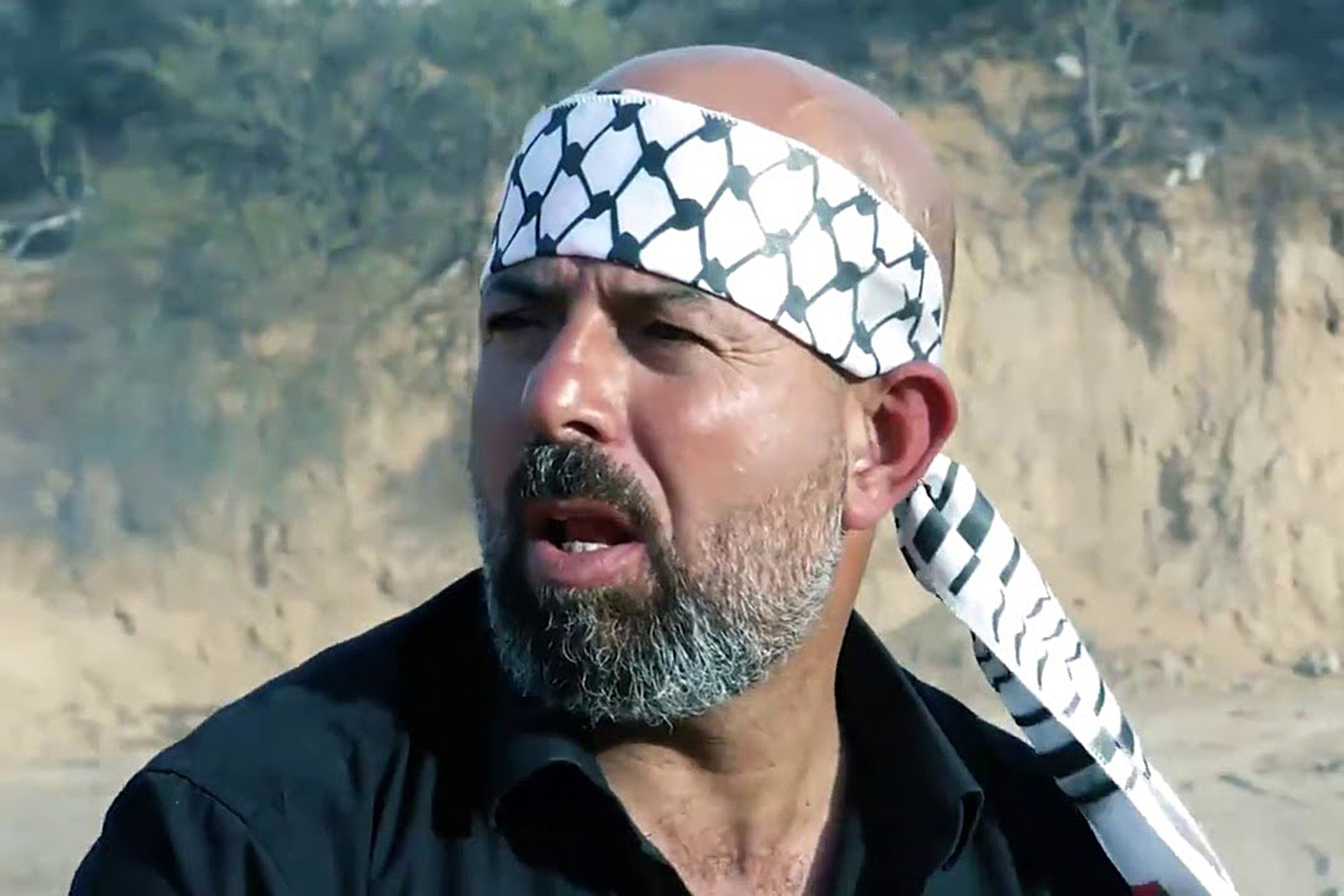Martyr artist Alaa Qaddoha (social networking sites)
Gaza
- “The artist and actor have become a target for Israel,” when Palestinian artist Alaa Qaddoha said it on December 23, following the assassination of his companion, director Mohamed Khalifa, who trained him. He did not know that he would become a martyr.
At dawn on Tuesday, Alaa was martyred, along with other members of his family, in an Israeli air strike that targeted him and his family in the Nuseirat camp in the central Gaza Strip.
During the past three years, the martyr artist Alaa Qaddoha gained wide fame, following his participation in the second part of the series “Heaven’s Gate” produced in 2021, and he followed that up by participating in the series “Fist of the Free” directed by the martyr Muhammad Khalifa, and with the participation of other actors and artists, a number of whom died during The ongoing Israeli war on Gaza since October 7th.
A snapshot from the series Fist of the Free (Al Jazeera)
Targeting resistance art
Local Palestinian circles say that the assassination of the martyr artist Alaa Qaddoha, whose origins go back to a refugee family from the city of Jaffa in Palestine occupied in 1948, and after similar assassinations of the “heroes” of the Fist of the Free series, appears to be a “systematic targeting” of resistance art makers.
Following the “Al-Aqsa Flood” operation carried out by resistance fighters from the Izz al-Din al-Qassam Brigades, the military arm of the Islamic Resistance Movement (Hamas), on October 7 of last year, when they invaded the settlements surrounding the Gaza Strip, observers and activists on social media platforms recalled the Fist of the Free series, describing it as Representative simulation of the process.
This series, produced by the Hamas movement and classified as an “intelligence work of art,” is based on true stories that highlight what is called the “clash of brains” between the resistance and the Israeli occupation intelligence services.
On February 10, 2022, Al Jazeera Net published a report anticipating the broadcast of Fist of the Free in the month of Ramadan of that year. At that time, the head of the Hamas movement’s production department, Dr. Muhammad Thuraya, said that the goal behind this series was to present a Palestinian narrative that is counter to the Israeli narrative, and to highlight The resistance's performance developed in what he described as a "clash of minds."
Soraya added: “We are working hard with our modest capabilities to confront Israeli lies and deception, in awareness of the magnitude of the impact of drama on the public’s awareness.”
With the assassination of Qadouha, and before him, the director of Fist of the Free, Muhammad Khalifa, and the photographer Mustafa Thuraya, and preceded by the artist Ali Nisman, who was to participate in the second part of the series, Palestinian artistic circles suggested that the assassinations were systematic and aimed at “revenge” against the heroes of an artistic work that the Al-Aqsa Flood operation turned into reality.
Artists who participated in the Ahrar movement expressed great sadness over the separation of Qadouha and his companions, but they preferred not to talk about the series, or whether it was a reason for the assassination of him and those who preceded him.
Following the assassination of director Khalifa in December of last year, the martyr artist Alaa Qaddoha, pointing to the ruins of the martyr director’s house, said that the occupation launched a raid on the house as if it was targeting one of the senior leaders of the resistance, adding that “the director, actor and artist is a target for Israel, and this is what "It exposes the occupation's lies and its claim that it targets resistance fighters."
As for Qadouha, what he described as the “defeated occupation army” was greatly influenced by the series and films directed by Khalifa, which had a great resonance in the Arab and Islamic world, and with his assassination, the occupation confirms that “the message has been conveyed.”
"General Moshe"
The martyr artist Alaa Qaddoha gained wide fame locally and in the Arab world with a short video clip that he published on his account on the “Tik Tok” platform, in which he appeared as an Israeli officer called “General Moshe”, wearing a military uniform resembling that of the occupation army, and with an appearance that many believed that he was actually an Israeli officer before his true identity was confirmed. To his audience as a satirical Palestinian artist.
In this clip, Qadouha was commenting on a scene that spread like wildfire on social media platforms of a crow dropping an Israeli flag. He opened his clip with a Quranic verse and concluded it by calling on the Israelis to flee Palestine.
The number of followers of the artist Qadouha, who describes himself on his social media accounts as a comprehensive artist who presents satirical political programs, increased last summer, when he published a clip entitled “Bye, Bye Israel” to comment on the martyrdom of the Egyptian soldier Mohamed Salah, who clashed with Israeli occupation soldiers and killed and wounded a number. Among them after he infiltrated the Egyptian-Israeli border, and Qadouha described him as “the pride of the Arabs.”
Qadouha was also famous for his patriotic and nationalist stances, which were reflected in short video episodes that he broadcast on his accounts, through which he commented in his sarcastic style on current issues, Palestinian and Arab.
Source: Al Jazeera

